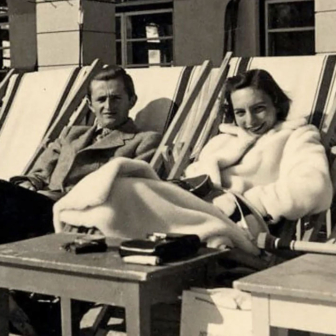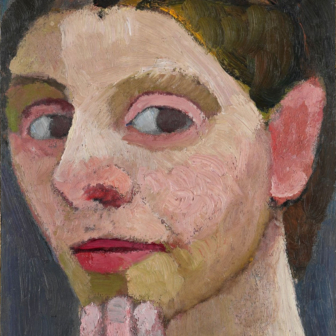Mary Beard insists that we shouldn’t look to the ancient Romans for answers to modern political problems. But in the final pages of her latest, compulsively readable history of Rome, the emerita professor of classics at Cambridge University does issue a clear warning about the dangerous appeal of one-man rule.
Beard, a deeply read classicist, is also a commentator, TV star and bestselling author; one of the great populist-scholars of our time, she has brought the ancient world into contemporary consciousness like no other.
She is right to insist that the inhabitants of the past can’t be expected to project any sort of ready-made solution onto our troubles. Besides, judging by the findings of her latest research, the kinds of suggestions the Romans themselves would make might not be palatable; they might indeed hasten the decline of our familiar institutions and make the slide towards one-man rule inexorable.
Beard’s third book-length analysis of Rome — following her narrative history of Rome SPQR (2015) and the quirkier art history of Twelve Caesars (2021) — focuses on the emperors who ruled Rome for more than 300 years from Augustus to Alexander Severus. Her latest book, Emperor of Rome: Ruling the Ancient Roman World, is not a chronological narrative of the careers of individual emperors but a thematic, institutional description of what Beard calls the “category” of emperor: the Roman system of one-man rule.
This institutional approach allows her to discern patterns and themes, and to ask questions like: How did one-man rule work? How did the emperors get things done, in Rome and abroad? And, more pertinently, how did they get a republic — albeit a deeply flawed oligarchy already succumbing to warlordism and civil war, and a slave state to boot, but a vibrant political and social culture all the same — to accept, comply with, and ultimately embody a system of autocracy, a culture of political strongmen?
The first part of Beard’s answer is that the emperors purchased stability by bringing the military under close personal control. Under the Roman republic, legions had theoretically been controlled by the Senate but increasingly, in practice, by wealthy warlords. From Augustus, the emperors put the legionaries, auxiliaries and veterans on the state budget and acted as commander-in-chief — to use the American term — to exert force against external enemies on the distant frontiers and to protect the regime against internal ones in Rome.
This did not mean Rome was “full of men in uniform and march-pasts… such as Trooping of the Colour or Bastille Day,” Beard notes. “The city of Rome itself was strikingly demilitarised even by the current standards of Western capitals.”
Indeed, a second part of Beard’s answer is that the emperors were also careful to preserve the trappings of republican norms and institutions. Even if the Senate became a powerless debating forum, and even if the consular officials served for only two months instead of twelve as formerly, they kept the wealthy “senatorial elite,” as Beard calls them, busy, respectable and ever looking to promotion and proximity to imperial power. And, as Beard dryly notes, replacing elections with imperial appointment saved the elite the tedium and expense of populist politics.
With the imperial palace now the real source of executive authority, who did the actual work of running the city and the empire? Beard describes a system of “government by correspondence,” with letters flowing between the emperor and governors around the empire. The emperor was also personally involved in receiving petitions and adjudicating tricky lawsuits. Literate and loyal staff were needed.
But this kind of work was too menial for the wealthy elite. They would rather govern a province or command a legion than push paper in the palace. Besides, allowing a powerful citizen to become established in the back rooms of the palace was a risk an emperor might well have wanted to avoid.
Better, it seems, to rely on trusted and tractable slaves. In the imperial court, it was slaves and ex-slaves, or freedmen, who did most of the actual work. Cooks, doctors, footmen, hairdressers, gardeners and the all-important food-tasters: they provided the personal service to keep the ruler, and his family, comfortable and alive.
And they also provided the administrative, managerial and clerical muscle that the imperial system — the financial controllers, secretaries, letter writers in Latin and in Greek, librarians, petitions clerks, advisers and counsellors, and trusted emissaries — needed to control a boisterous city and a huge empire. Skilled and experienced officials provided administrative continuity from one emperor to the next.
But this politico-administrative logic generated what Beard calls “pressure points” in the imperial system. Senators were aghast that freedmen could enjoy imperial trust and exercise imperial power. Ultimately, it forced the question: who was really running the show? Pliny complained that the “chief sign of a powerless emperor was powerful freedmen.” As Beard acutely observes, that “d” in freedman is crucial.
Ultimately, though, even strongmen weaken and die, highlighting the ultimate vulnerability of one-man rule: mortality and the problem of succession. All despots are would-be dynasts, but hereditary succession can be messy when it involves feckless sons or scheming brothers; mutinous generals and seditious senators pose further risks. Augustus hit upon a novel solution. His natural heirs having all died, he ended up choosing his wife’s son by a former marriage, Tiberius, and made his wishes clear by “adopting” him as his son.
Adoptive succession became the norm. It served to widen the talent pool, even creating the impression of an imperial meritocracy, Beard observes, “while still presenting the transmission of power in family terms.” It was not until 79 CE, after more than a hundred years of imperial rule, that a biological son (Titus) actually succeeded his father (Vespasian); it didn’t happen again for another century. Meanwhile, for eighty years, five emperors in a row from Nerva to Marcus Aurelius “adopted” their successors.
It is as if an American president could nominate a vice-president into a powerless but prominent role on the explicit understanding that she will succeed when the president dies (and not before). There is no “lesson” in this for today’s politics, of course.
Though plenty of assassinations and two further civil wars caused rapid turnover in the imperial throne, the practice of adoption did stabilise and strengthen the imperial system.
Beard’s entertaining style conceals the seemingly effortless command of the scholarship that underpins Emperor of Rome. She ranges across time and across source material; she tirelessly draws on the archaeological evidence of palaces, statues and coins, the literary evidence of poetry, speeches, letters and histories, the epigraphic evidence of tombstones and miraculously preserved legal documents; she takes nothing at face value, and is constantly challenging received historiographical wisdom. A particular pleasure are the bibliographical essays that summarise the relevant scholarship of each chapter in place of footnotes.
But at times the great populariser is guilty of over-popularising. Her focus on the institution of the emperor doesn’t prevent her from indulging some of the juicier tales. “This was a world of toddlers and teenagers as well as grown-ups and greybeards” is one of several sentences that could safely have been subbed out. Mary Beard is also unaccountably mean to Marcus Aurelius’s Meditations, retitling the great Stoic’s philosophical autobiography as Jottings to Himself.
Anyone familiar with the murderous court intrigues of Hilary Mantel’s Tudor Court in Wolf Hall, or the tamer Windsor jostling in The Crown, will be right at home in Beard’s imperial Rome. Less fictionally, the cronyism and flattery of Trump’s (first?) White House, its performative bombast and self-indulgent fakery, may also be recognisable in Beard’s account of the same pathologies displayed by the ancient autocrats. Don’t forget that Rome, cynical and secular, even posthumously declared some of its emperors as divine.
As one-man rule arrived and stayed, Beard points out, scarcely anyone complained. Senators became, in the words of Tacitus, ineffective dissidents or cowards, flatterers and job-seekers; “power dining” with the emperor became, as she brilliantly demonstrates, an occasion of risk and uncertainty as well as an opportunity for promotion and proximity to power.
In short, “despite the loud protests against the crimes and misdemeanours of individual rulers, or the discontent with some aspects of one-man rule, there is hardly any trace of significant resistance to one-man rule as such.”
Indeed, as Beard observes in the closing paragraphs of this book, autocracy throughout history has depended on people at all levels accepting and adjusting. “It is not violence or the secret police, it is collaboration and cooperation — knowing or naive, well-meaning or not — that keeps autocracy going.” This is the lesson we are to mark. •
Emperor of Rome: Ruling the Ancient Roman World
By Mary Beard | Allen & Unwin | $65 | 512 pages




